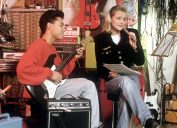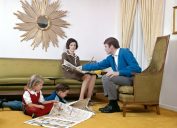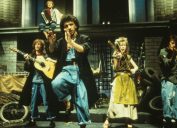33 Fads Kids Born After 2000 Will Never Understand
Mood rings, lava lamps, and slap bracelets are among the vintage trends today's kids don't get.
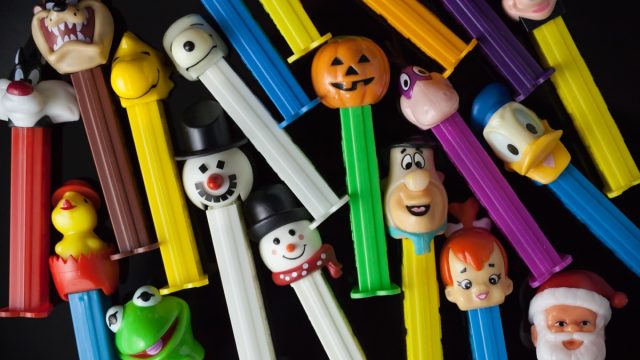
Every generation has unusual fads that are uniquely their own. Today, kids are into Snapchat, social media challenges, and so many, many memes. That might not sound all that peculiar, but if someone from the past took a time machine to the present day, they would be genuinely confused about what's going on here. And they're not alone. The last century is filled with trends that seemed like they were going to last forever, but would make no sense whatsoever to anybody born after 2000. Here are 33 weird old fads that Gen Z'ers would need to have explained to them. And for more 20th century nostalgia, peruse these 100 Photos That Kids Born After 2000 Will Never Understand.
1
Mood rings (1970s)

You could find out somebody's mood just by asking them, "How are you feeling today?" But a far easier (if less reliable) way would be having everyone wear a mood ring. How did this practical jewelry work? Whether it really did or not is still up for debate, but the color-changing effect was the result of thermotropic liquid crystals inside the ring's stone, which alternate shades depending on your body temperature. Pink meant happy, blue was relaxed, brown meant you were stressed or anxious—well, allegedly. In other words, about as accurate as your average horoscope. And for a look at other past trends, here are 100 Slang Terms From the 20th Century No One Uses Anymore.
2
Digital pets (1990s)
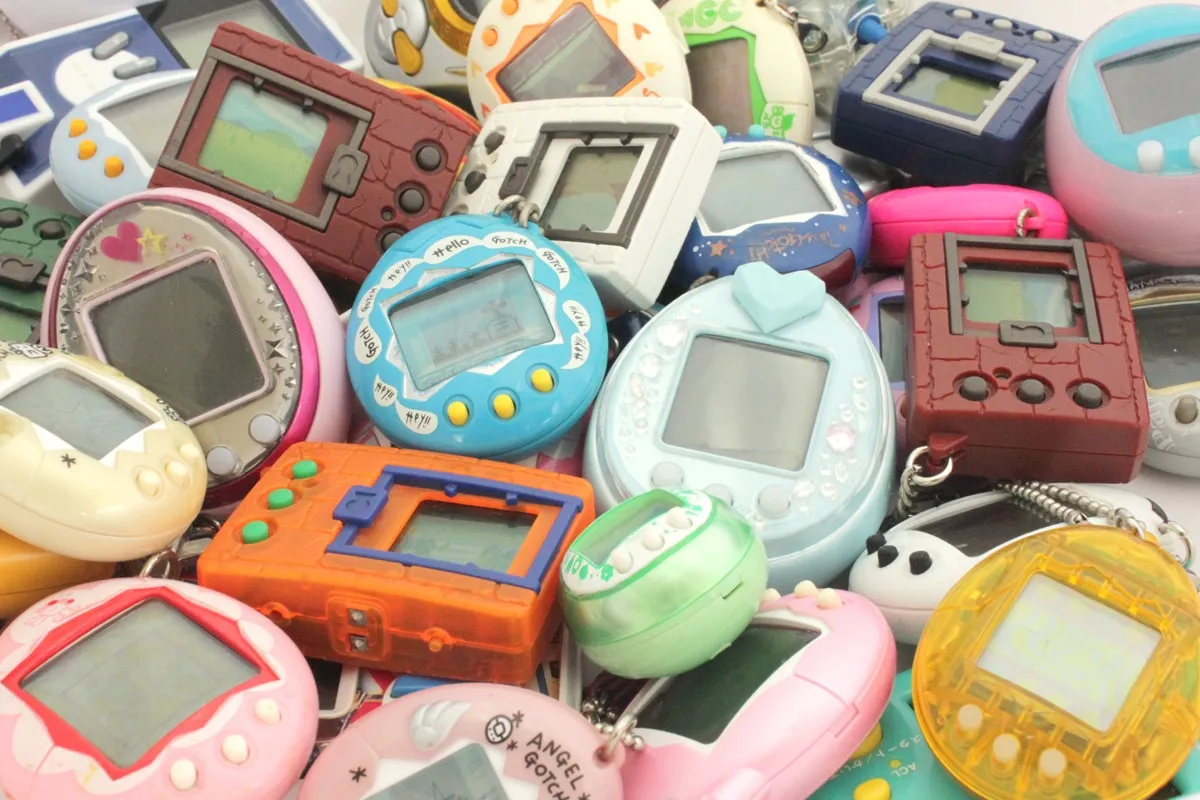
An actual pet like a dog or cat takes serious commitment, but a digital pet like a Tamagotchi took… well, it could be argued that it was just as much of a commitment. Sure, these tiny devices were a lot less expensive, and didn't require nearly as much space, but your Tamagotchi needed attention, lots of attention, from being fed regularly to being played with to being scolded when it misbehaved. If you ignored it for too long—and because it was so portable and pocket-sized, it was always with you—it would beep until it got your attention. And yes, just like real, living pets, the Tamagotchi went to the bathroom—and you had to clean it up. For a look back at more '90s kitsch, check out 25 Things Only Parents in the 1990s Will Remember.
3
Dance marathons (1920s)
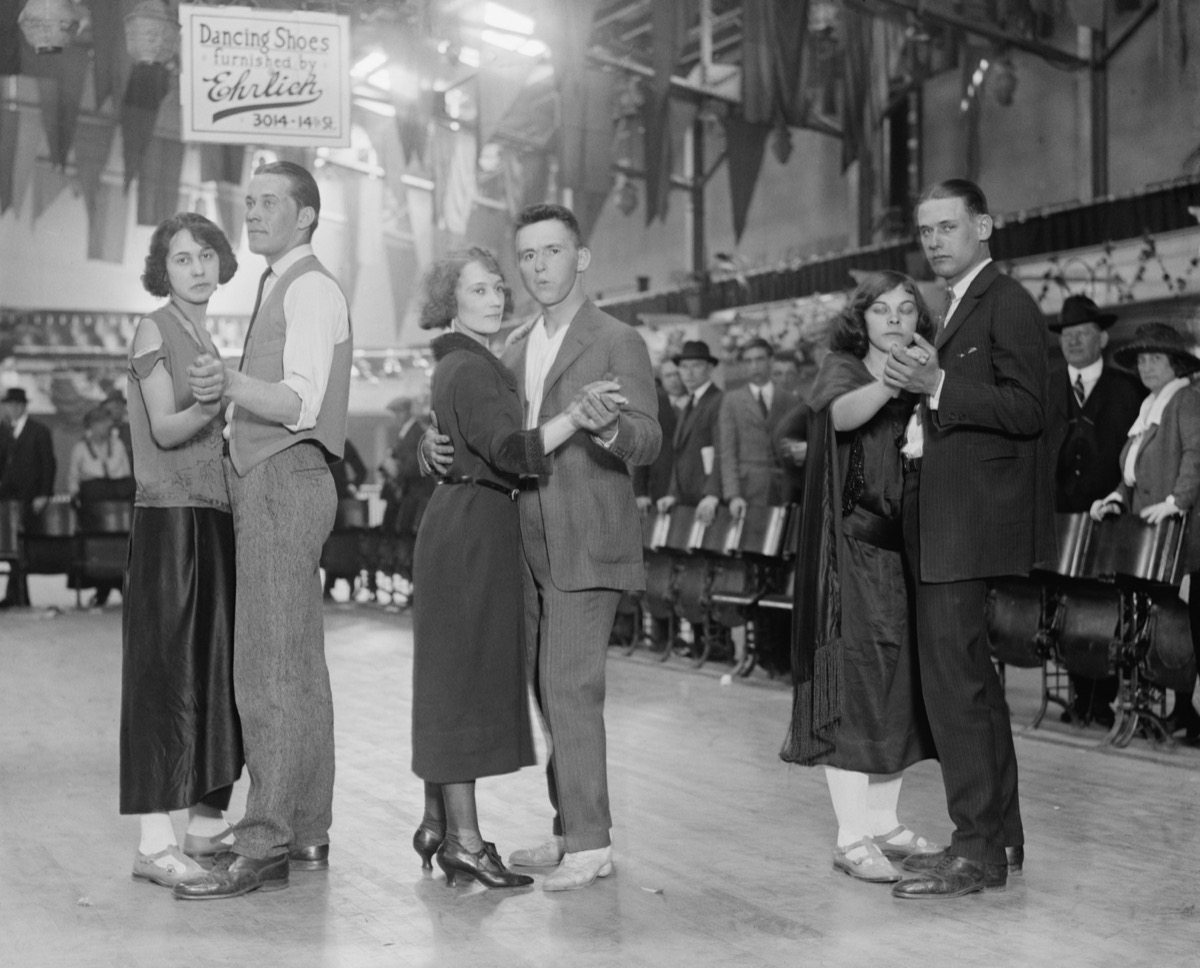
A dance contest crossed with masochism. Couples signed up to dance their hearts out and kept doing it until they passed out from exhaustion. And that was the best case scenario. A dance marathon was more of an endurance test, lasting dozens and sometimes hundreds of hours. Yes, hundreds. The winners of one dance marathon managed to stay on the feet, rhythmically swaying, for a staggering 1,473 hours. But it could turn tragic: In 1923, a 27-year-old man died after dancing with his partner for 87 consecutive hours without sleep.
4
"Kilroy was here" (1940s)

A popular form of military graffiti during World War II, "Kilroy was here" depicted a bald man with a big nose peeking over a wall. Who exactly Kilroy was and why he was here was mostly shrouded in mystery. The American Transit Association held a contest in 1946 to determine the identity of Kilroy once and for all, and dozens of Kilroys came forward to claim they were the true inspiration. But the group believed the story of a shipyard worked named James J. Kilroy, who explained that he used the graffiti to show his superiors he'd already inspected a tank. The station named him the real Kilroy, and rewarded him with a 12-ton trolley street car.
5
Pac-Man fever (1980s)
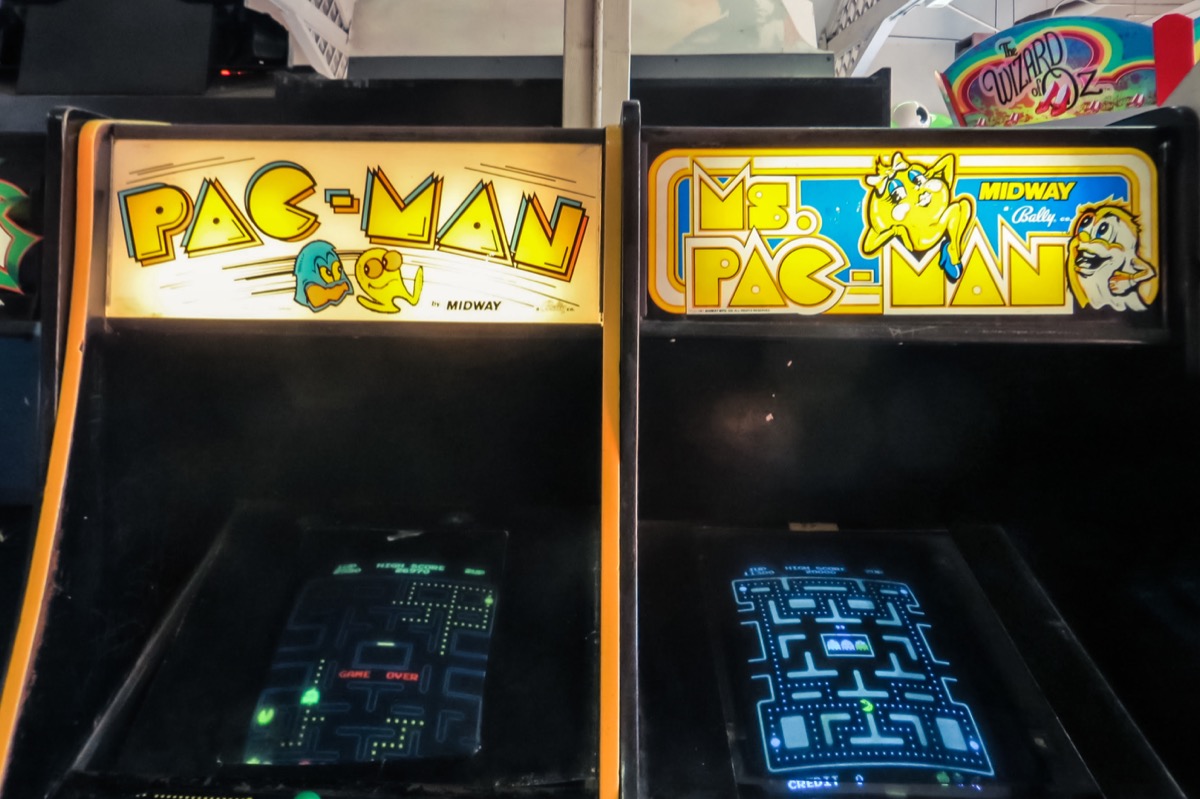
Yes, it was a hit song from 1981—with lyrics like "I've got a callus on my finger, and my shoulder's hurting, too/I'm gonna eat them all up, just as soon as they turn blue"—but Pac-Man fever, the medical malady, was a very real condition during the '80s. OK, not real as in something a doctor would prescribe medicine to treat. But real as in, the entire country was mesmerized by a video game. Not just young teens with quarters to spend, but also people who didn't normally care about gaming. The '80s were a decade of Pac-Man cereal, clothing, cartoons, books, even board games. That little yellow circle saturated America culture to such an extent that literally everybody knew about him. There are people today unaware of League of Legends or Fortnite, but everybody in the '80s knew about (and probably played) Pac-Man.
6
Pet Rocks (1970s)
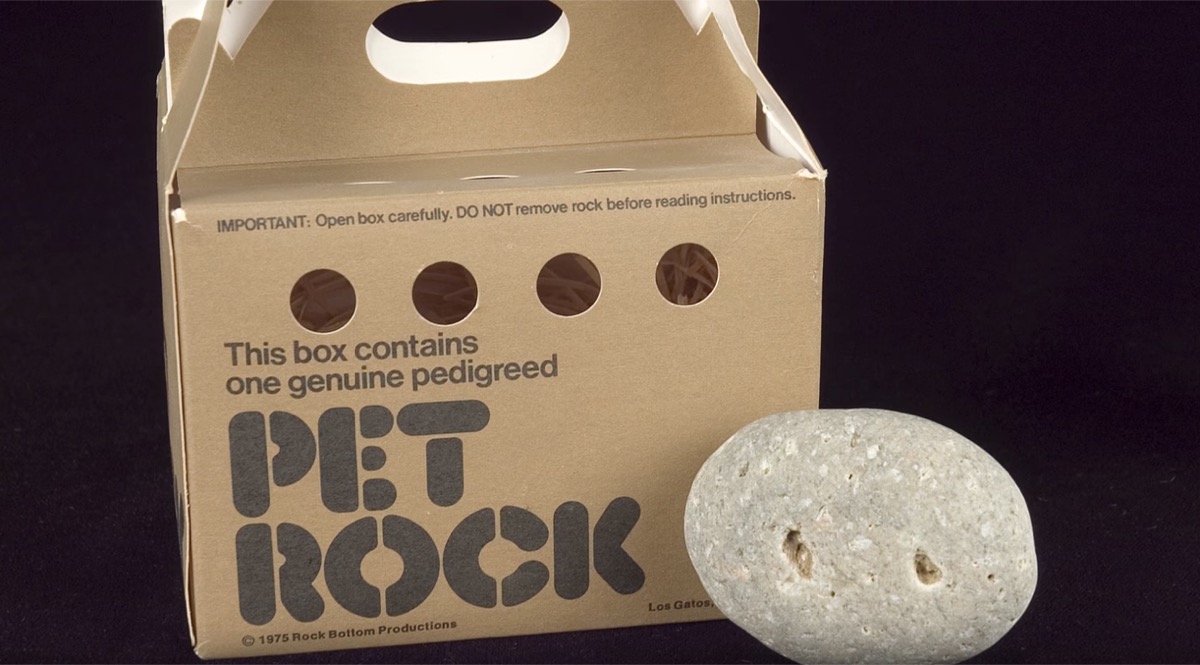
As P. T. Barnum once said, there's a sucker born every minute. And during the '70s, every one of those suckers was paying $4 for something they could find for free in their own backyard, thanks to a brilliant idea by advertising executive Gary Dahl. There was nothing especially fancy about the Pet Rock. It was, quite literally, just a rock. But that was the joke, man, and an impressive 1.5 million people were sufficiently enamored with the Pet Rock to buy one of their own. And for more strange '70s habits, check out these 20 Amazing Photos Every '70s Kid Can Relate To.
7
Phone booth stuffing (1950s)

Phone booths might take some explaining for the smart phone generation, but there's no way to explain the fact that, at one point, college kids thought it was hilarious to see how many bodies they could squeeze into one. In England, cramming as many bodies into a phone booth as possible was called the "telephone booth squash," which somehow makes it sound even more alarming. And if you're enjoying this quirky walk down memory lane, learn The Craziest Thing That Happened the Year You Were Born.
8
Tang (1960s)

Kids in the '60s didn't drink this orange-flavored powdered beverage for the taste: They gulped it down because they were pretty sure Tang would help them become astronauts. John Glenn drank it during his history-making orbit around the Earth in 1962, and that was all the evidence we needed. The makers of Tang capitalized on the connection, reminding us in commercials that Tang was "chosen by the Gemini astronauts." The truth finally came out years later, when Buzz Aldrin, the second man to walk on the moon, revealed his true feelings: "Tang sucks!"
9
Cabbage Patch Kids (1980s)

These dolls, originally marketed under the name "Little People," were vastly different from any other doll in one remarkable way—they weren't made, they were born. Yes, born, like actual human children. Cabbage Patch Kids are still "birthed" in a Georgia factory called BabyLand General Hospital, where the workers dress like real nurses, and customers don't buy them but "adopt" them. They're no longer the hot commodity they once were, but for a time, the novelty made these dolls the most coveted toy in town.
10
Magic Eye (1990s)

Be honest: Did you put your face right up against the screen? The visual trickery of these autostereogram images captivated the nation, even if they didn't always understand what was going on. All they knew was that if you stared at a Magic Eye image for long enough, and your eyes were completely unfocused, a 3D image would appear. It was amazing when it worked—but it didn't work for everybody, causing a lot of frustration and anxiety. Shows like Seinfeld and movies like Kevin Smith's Mallrats had satirical fun at the expense of those poor souls who stared and stared and never saw a thing.
11
Roller skate parties (1970s)
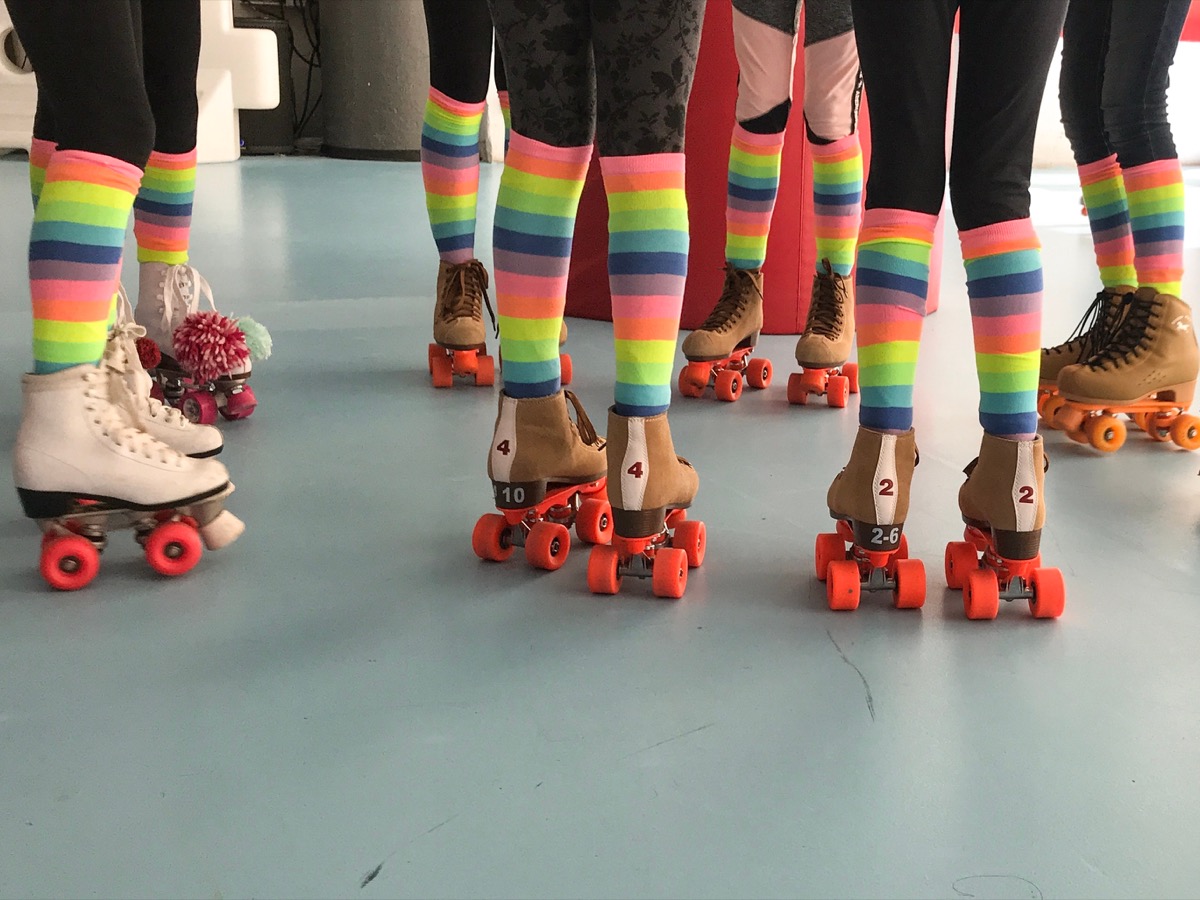
Whether it was holding hands with your crush as you slow-skated to an Olivia Newton-John ballad or getting your funk on with some roller disco—which dangerously combined high-energy dancing and wheeled shoes—roller skates were one of the hottest accessories of the '70s. And when you weren't skating, you could watch other people skate in movies like Rollerball, Kansas City Bombers, Skatetown, U.S.A., Unholy Rollers, and the most famous of all, Xanadu.
12
Pole climbing (1920s)

Have you ever looked at a flagpole and thought, "I should climb to the top of that"? If not, it's a good thing you weren't alive in the 1920s, because climbing flag poles and then sitting on the top was a hugely popular activity for some reason. It all started with a 1924 dare-turned-publicity stunt by Alvin "Shipwreck" Kelly, who sat on top of a flagpole for a record 13 hours and 13 minutes. People started imitating him, managing to stay on the flagpole for even longer, which irked Shipwreck Kelly—so he climbed up a flagpole in New Jersey and stayed there for 49 days. That's right, not all heroes wear capes.
13
The Abdominizer (1980s)

Invented by Canadian chiropractor Dennis Colonello, the Abdominizer was a piece of blue plastic with handles that—at least according to the commercials—would help you "rock, rock, rock your way to a firmer stomach!" It was nonsense, but thousands of people forked over the $19.95 to add it to their exercise routine. Today you'd be lucky to find an old Abdominizer sold on eBay, where nobody seems entirely sure what it's supposed to do. As one online seller suggested, "Apparently it also makes a great toboggan?"
14
Bed-Pushing (1960s)

Being pushed on a bed might not sound all that thrilling, but according to a Time magazine story from 1961, it was nothing short of a "craze," especially among Canadian college students, who were "indefatigably mounting beds on wheels and pushing them over highways, prairies and frozen lakes." They weren't being pushed over short distances either: Students at Ontario's Queens University created a new world record in '61 by pushing a bed over 1,000 miles of harsh Canadian terrain, which involved keeping that bed "rolling day and night for a week," Time reported.
15
Beanie Babies (1990s)
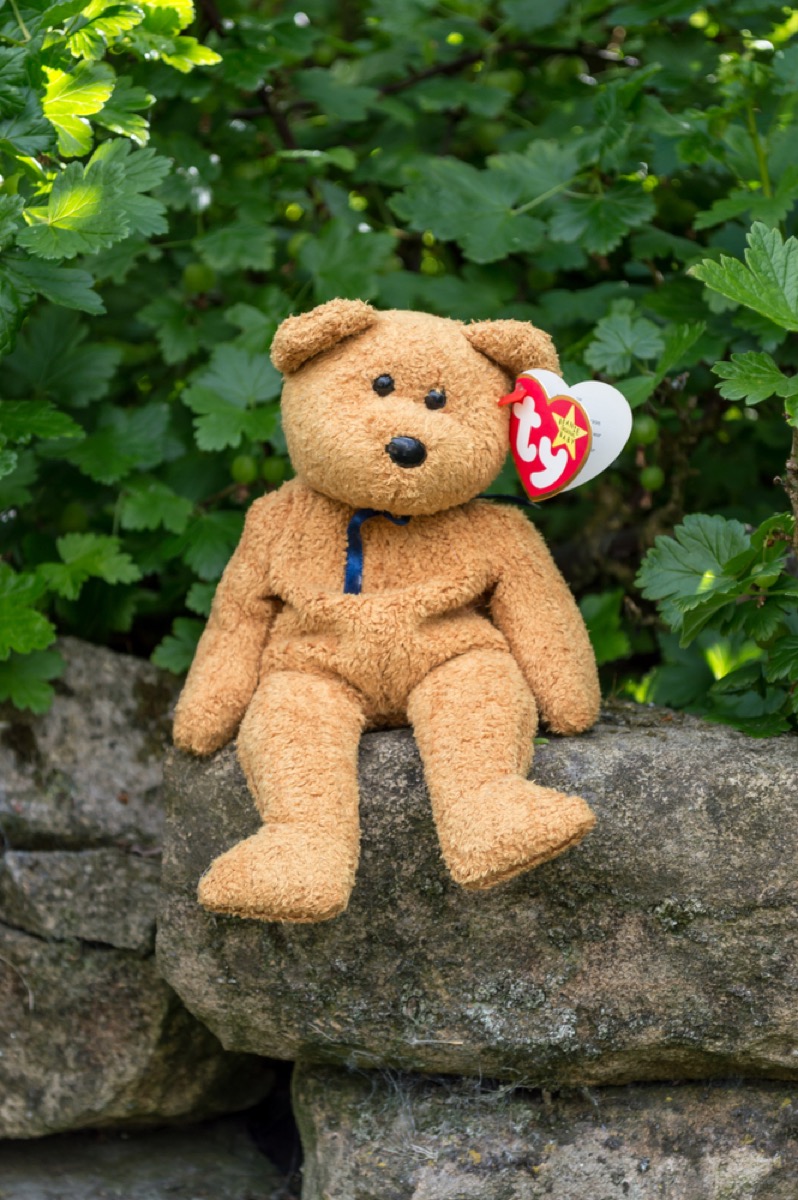
What was it about these bean-filled dolls that made people lose control? They fought over them in stores like they thought there might be gold hidden in the bellies—because in some cases, it seemed like they might really be worth that much. Beanie Babies creator Ty Warner drove up sales by sporadically "retiring" certain characters, and anyone who splurged on those dolls was promised a handsome return on their investment. While no one that we know of has retired with the funds collected from re-selling them, Beanie Babies themselves were a very lucrative business at one point: In 1998, they were responsible for $1.4 billion in sales.
16
Goldfish swallowing (1930s)

Don't be mistaken into thinking the internet invented people taking ill-advised risks on a dare. Many decades before the Tide Pod Challenge, teens were swallowing live goldfish because, well, somebody asked. It all started in 1939 when Harvard freshman Lothrop Withington swallowed a fish after his friends bet him $10 that he wouldn't. As he remarked later, "The scales caught a bit on my throat as it went down." Publicity from the stunt inspired college kids across the country to try it themselves, and another student from MIT downed 42 fish in one sitting (washing them down with chocolate soda). Politicians tried to intervene, with one Massachusetts senator proposing a bill to protect fish from "cruel and wanton consumption," making live fish eating a crime punishable by arrest. The bill didn't pass, but thankfully, this trend has died down on its own.
17
The Dancing Baby (1990s)

CGI was still in its infancy in the mid-'90s, and the world was not prepared for something as spectacular, as weirdly lifelike yet unbelievable, as a baby in diapers dancing. It began as a tech demo—whose creator, Michael Girard, once admitted that he regretted coming up with the baby "100 percent"—was given new life as a GIF by a LucasArts employee, and somehow ended up on the hit TV show Ally McBeal, dancing with Calista Flockhart. To this day, those who lived through the decade can't hear the "ooga-chaka" part at the beginning of "Hooked on a Feeling" without instantly thinking of the Dancing Baby.
18
Waterbeds (1980s)
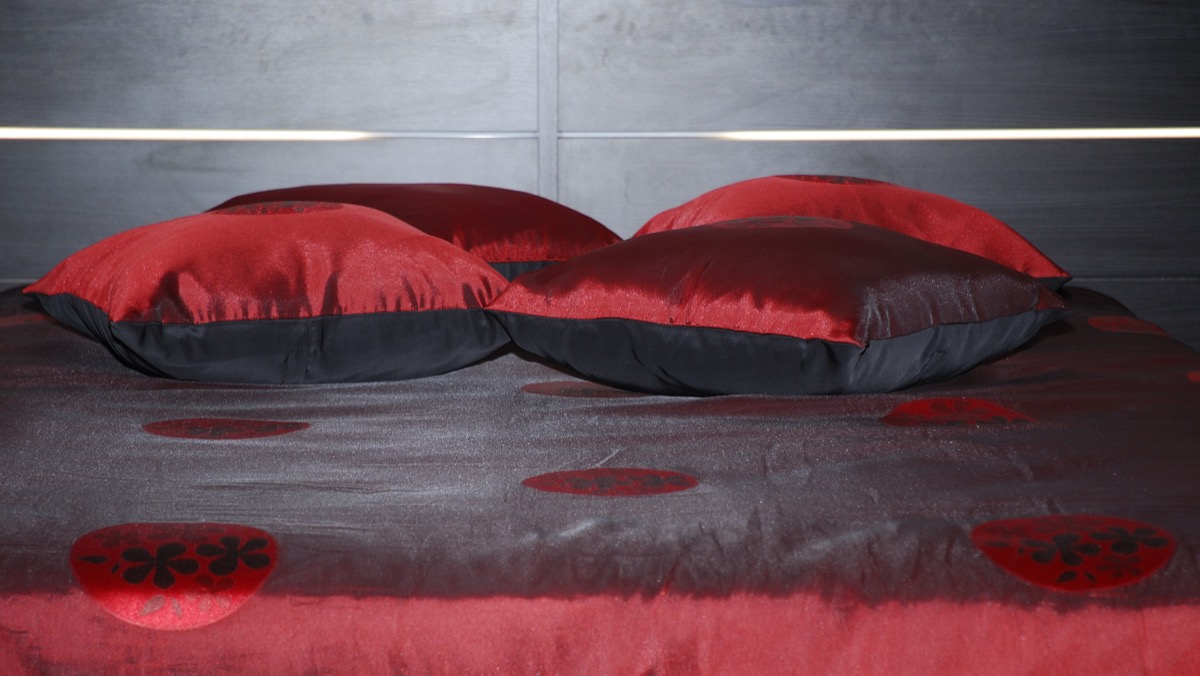
"Daddy, can I have a waterbed?" There was a time when every kid in America, just like the charming girl in this waterbed commercial, was asking that very question of their parents. Waterbeds were cool, exotic, and proof that you had the same boudoir taste as Playboy founder Hugh Hefner, who apparently had a king-size waterbed covered in green velvet and Tasmanian possum hair. The idea was cooked up in 1968 by San Francisco State University design student Charlie Hall, who had previously experimented with a chair filled with cornstarch and Jell-O.
19
Slap bracelets (1980s)
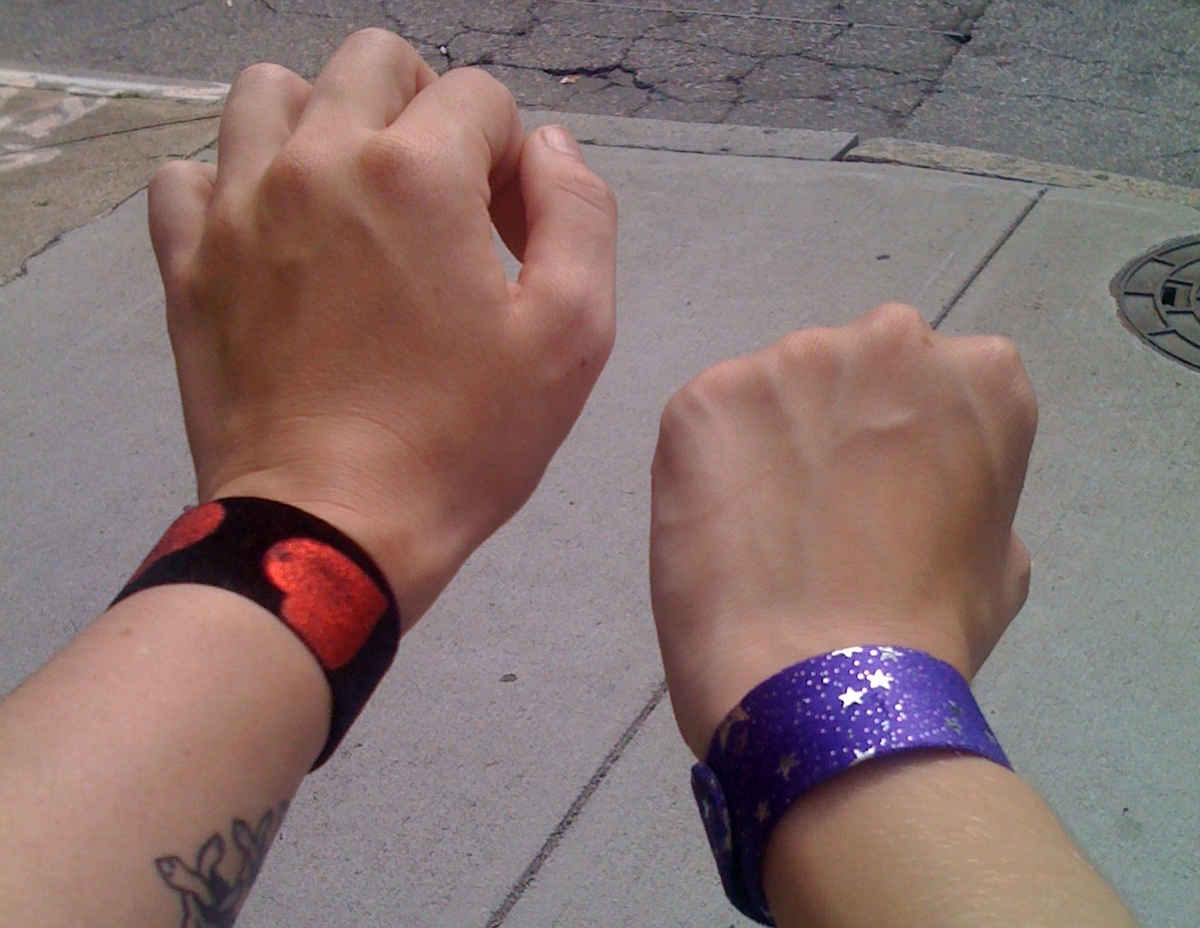
Invented in 1983 by Wisconsin high school shop teacher Stuart Anders, who came up with the idea while playing with some steel ribbon, these bracelets were originally sold as "Slap Wraps," a piece of steel covered in fabric. They were hugely popular for a while, until kids started injuring themselves with cheap knock-offs, and schools across the country decided to ban them.
20
Vibrating weight-loss belts (1950s)

In retrospect, everything about a vibrating belt as a weight-loss solution seems a little silly. Don't have time to eat right or exercise? No worries, just strap this belt around your belly and let it jiggle you to a firmer physique. While there is actually some evidence that gentle full-body vibration might have a few health benefits, you weren't going to drop serious pounds.
21
8-Tracks (1960s)

They were clunky and challenging, and songs were usually split in two so they'd fade out in the middle. Not to mention the fact that the sound was never as good as you'd get from a vinyl record or a cassette. But there was just something cool about 8-tracks. When they were first introduced in the mid-'60s—created, incidentally, by Bill Lear, the same guy who invented the LearJet—they were a standard feature in Ford's Mustang, Thunderbird, and Lincoln models. Having an 8-track meant you were somebody special. Even today, some people can't give up their devotion to 8-tracks. There's an 8-Track Tape Museum in Dallas that needs to be seen to be believed.
22
Troll dolls (1960s)
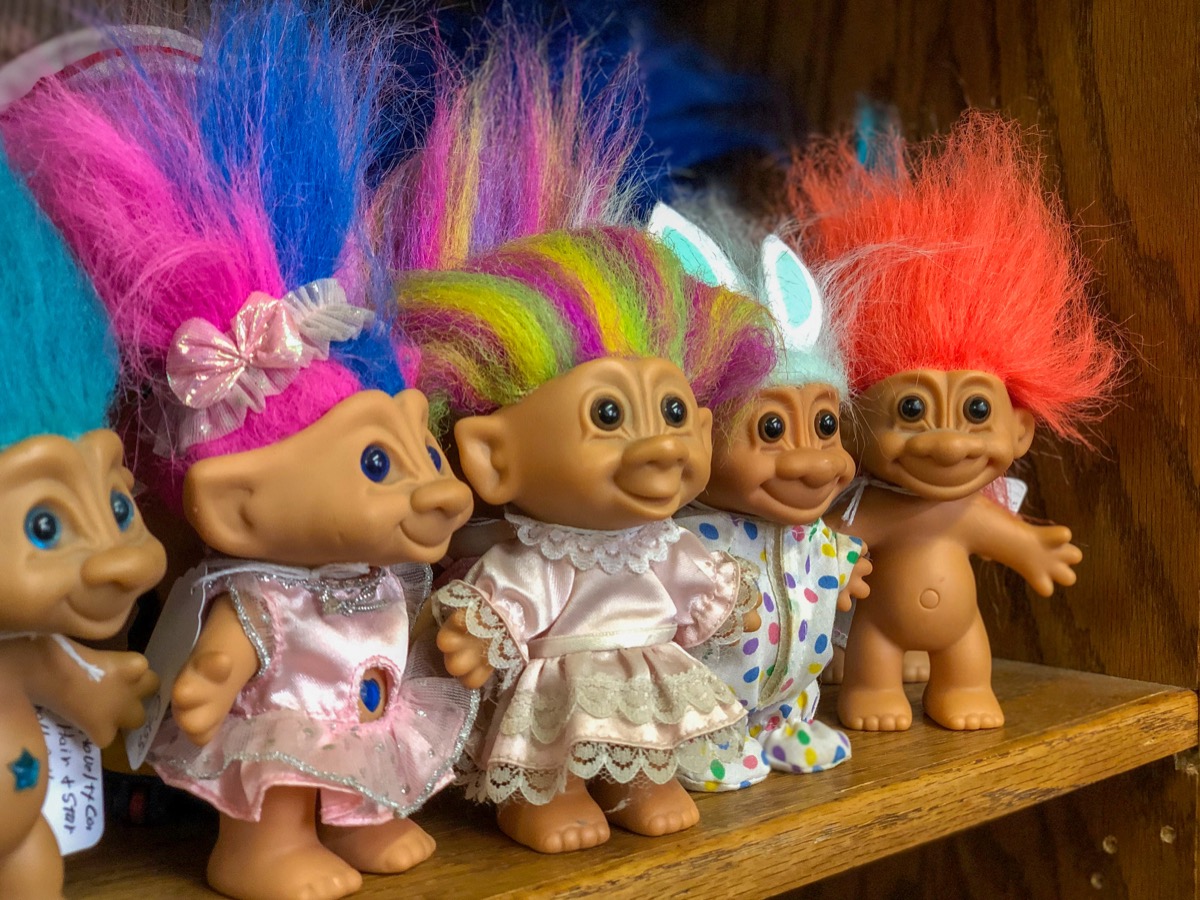
Invented in 1959 by a Danish woodcutter Thomas Dam, these impish dolls with kooky hairstyles turned up everywhere in the '60s, from the White House—pilot Betty Miller, the first woman to fly solo across the Atlantic, brought her lucky troll doll to meet President John F. Kennedy—to high school parties. ("Bring your own troll" parties were once all the rage.) And they've enjoyed resurgences of various sizes pretty much every decade since, with video games and cartoon specials in the '90s, and, more recently, a series of DreamWorks Animation films.
23
Lava lamps (1960s)
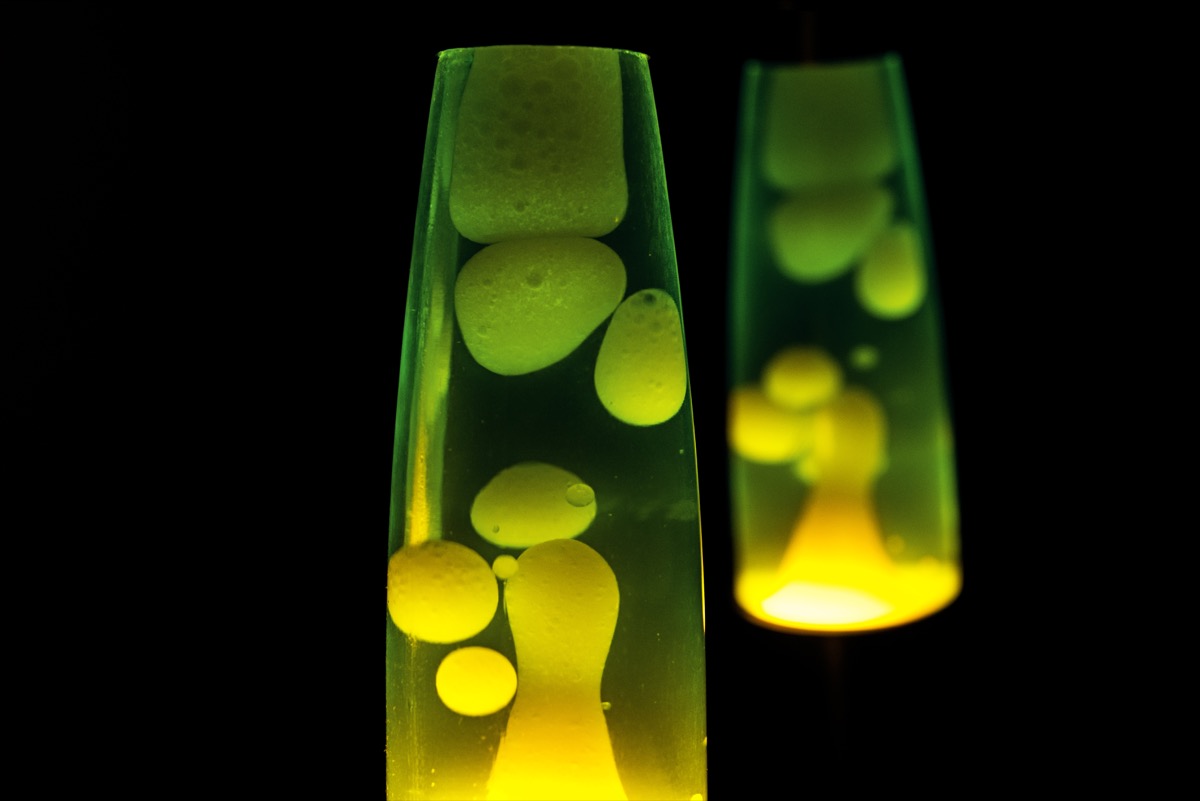
Lava lamps are inextricably linked with hippie culture, but their origins were much more clean-cut. The idea was actually the brainchild of a British accountant, Edward Craven-Walker, who was inspired by watching a homemade egg timer bubble on a stove in a pub in Hampshire, England. The trippy visuals have entranced youths for decades, but there's no denying the lava lamp's heyday was as part of the countercultural 1960s.
24
Blacklight posters (1970s)
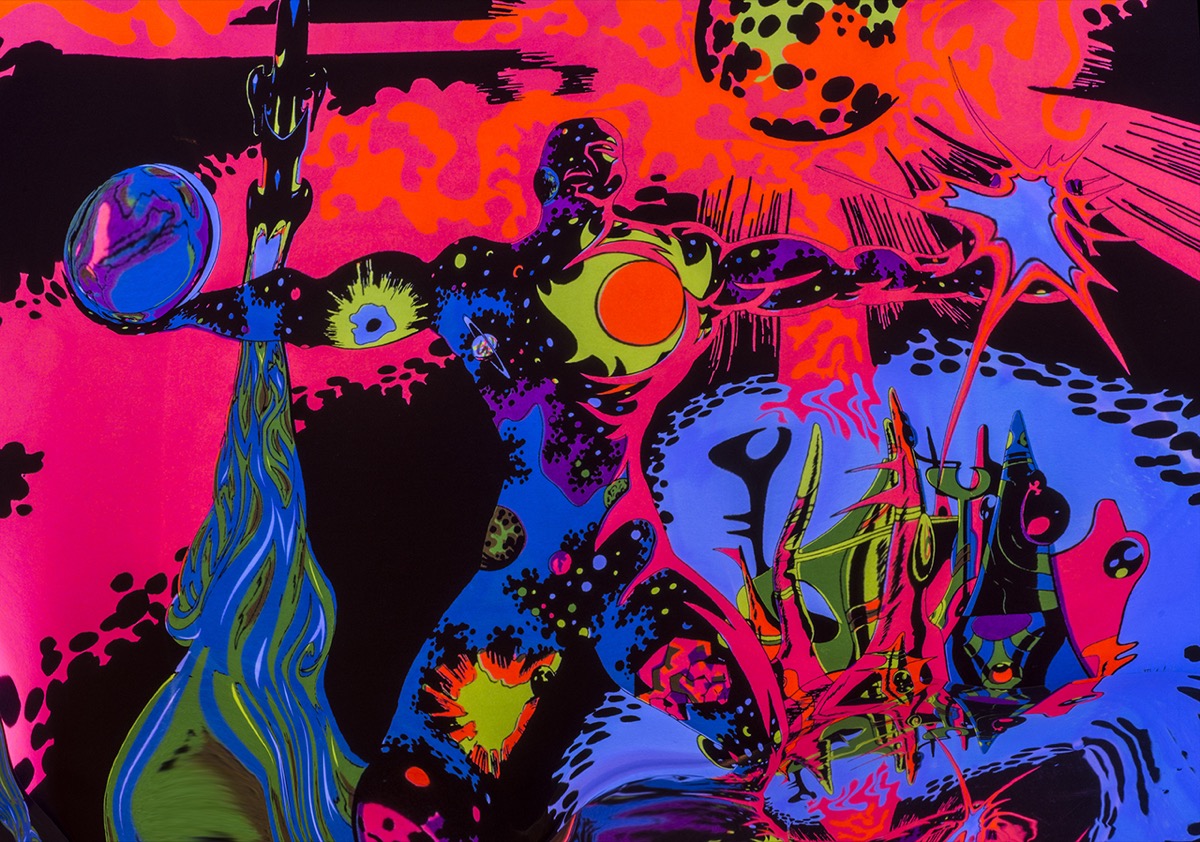
When you needed something psychedelic to stare at while listening to Pink Floyd's "Dark Side of the Moon"—and you didn't have a lava lamp—a trippy blacklight poster, with its fluorescent paint that seemed to glow in even the darkest of rooms, was the perfect accessory for any '70s bedroom. They might seem kitschy now, but if you had an R. Crumb "Keep on Truckin'" blacklight poster on your wall during that decade, people automatically knew that you were the grooviest cat in town.
25
Hacky sacks (1990s)
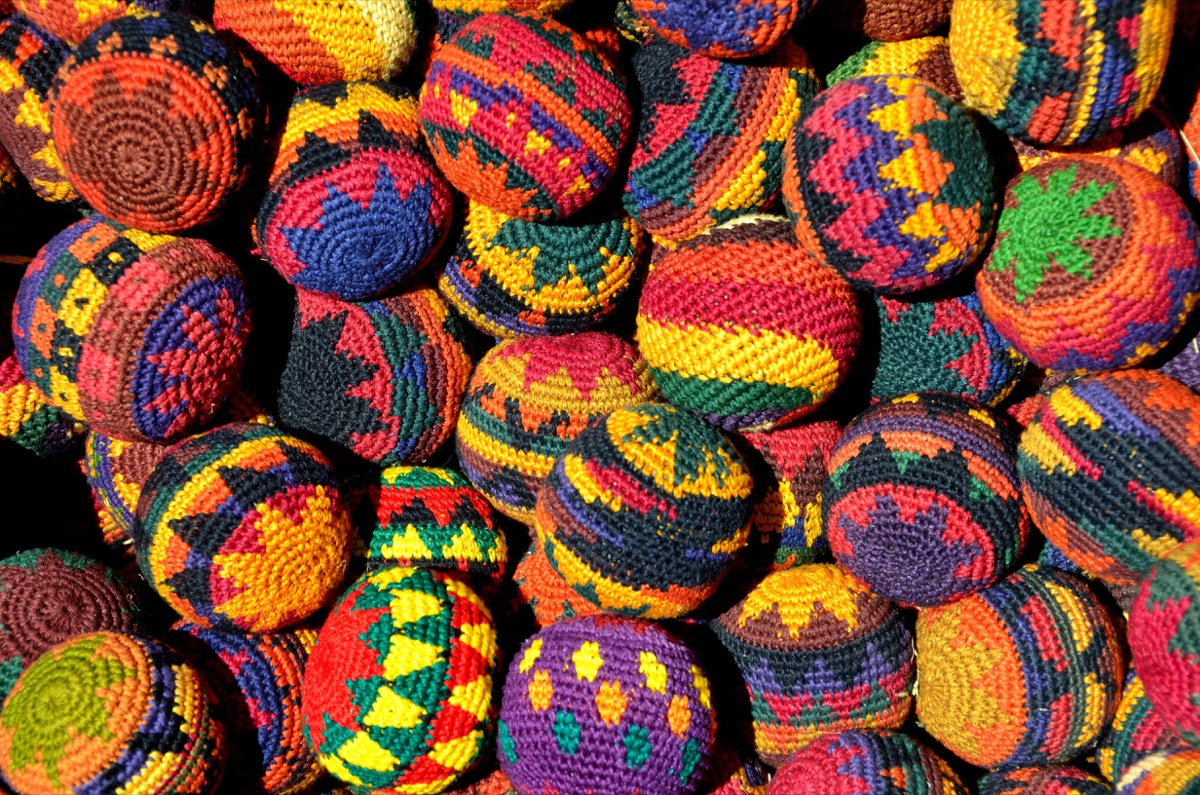
Hacky Sack is actually the name of the most popular brand of these small bags filled with rice that are actually called "footbags"—but you can pretty much just call them all "hacky sacks" now. The object of the game was to use your feet to keep the sack off the ground for as long as possible, and for whatever reason, it captivated a whole lot of people throughout the '90s. In the end, however, gravity always won.
26
Swatch watches (1980s)

The word Swatch came from the combination of two words: secondary and watch. The idea was that a watch wasn't all that different from a necktie—you didn't wear the same tie every day, so why should a watch be any different? Swatches were plastic, cheap, and came in a vast array of styles and colors. You could find a different one for every mood. And with an affordable price, people did just that. As Swatch marketing consultant Franz Sprecher said in an interview, "I remember standing in The Plaza hotel in New York and noticing that all the yuppies were wearing Swatches. It was a statement: 'I don't need a Rolex.'"
27
Rave dancing (1990s)

To call a rave a dance party doesn't really do it justice. Sure, there were people dancing, but things could get a little more intense than that. Here's how writer Samantha Durbin described a '90s rave scene in San Francisco: "I followed my friends into a room where yellow, green, and blue lasers bounced off the walls. The place reeked of cigarettes and sweat. People were fluttering about, quick and slow. The room vibrated electric music that was more alive than anything I'd known possible. The crowd was dancing, smiling, and welcoming us to join. I'd entered a disco inside a spaceship inside an enigma." There's not much we could add to that—other than a glow stick and a ride home at 5 a.m.
28
Koosh balls (1990s)
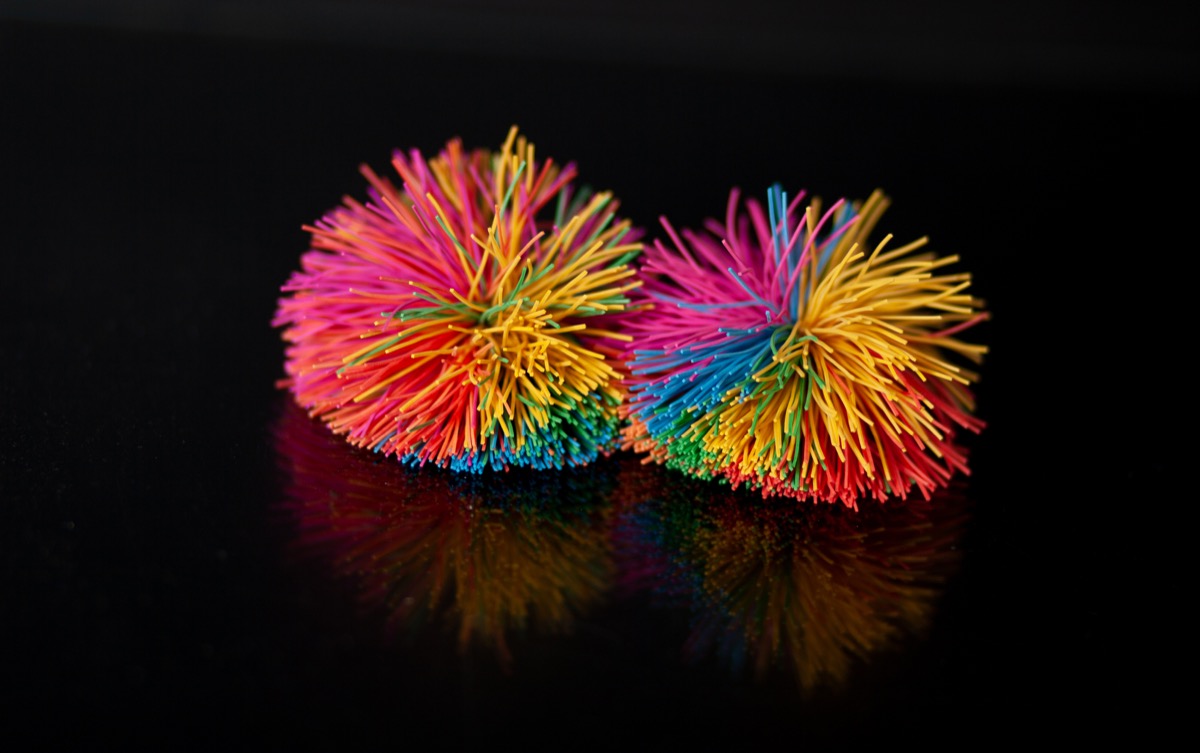
The original 1987 patent for the Koosh ball described it as "an amusement device which has a substantially spherical configuration." That doesn't sound super fun. Thankfully, the actual Koosh ball, named after the sound it makes when caught, was a little more interesting than that. It didn't catch on right away—critics described it as a "psychedelic sea urchin" and a "cross between a porcupine and a bowl of Jell-O"—but the odd little ball with thousands of rubber fibers became a huge hit in the '90s, thanks in no small part to Koosh ball enthusiast Rosie O'Donnell.
29
Rock 'Em Sock 'Em Robots (1960s)
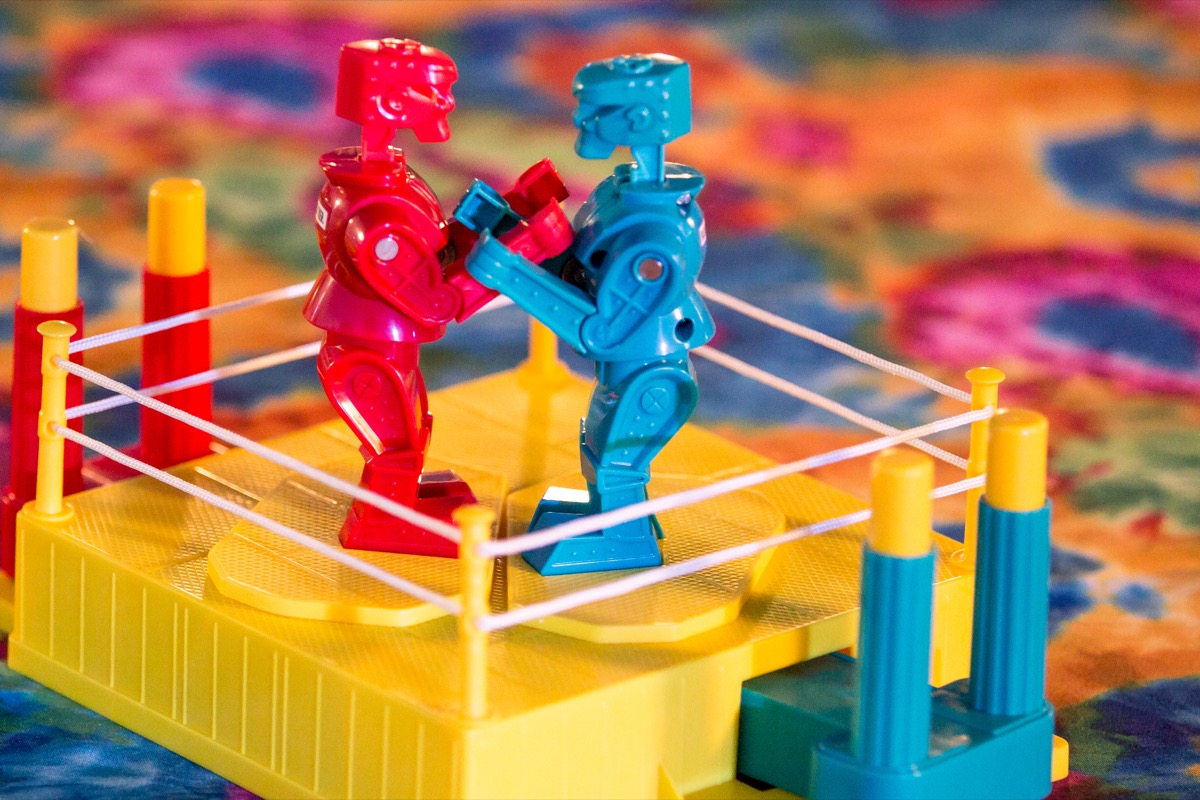
Nobody was afraid of AI taking over the world in the '60s. Back then, robots existed for one purpose only—to beat the snot out of each other in a cage match of doom. To devoted Rock 'Em Sock 'Em Robots players, there was heated speculation about whether the red robot or the blue robot had the most devastating right hook. Whatever the truth, there were few things as exhilarating to a kid in the '60s than watching his opponent's robot lose its head after enduring one too many punches. Victory never tasted so sweet!
30
Pez collecting (1990s)
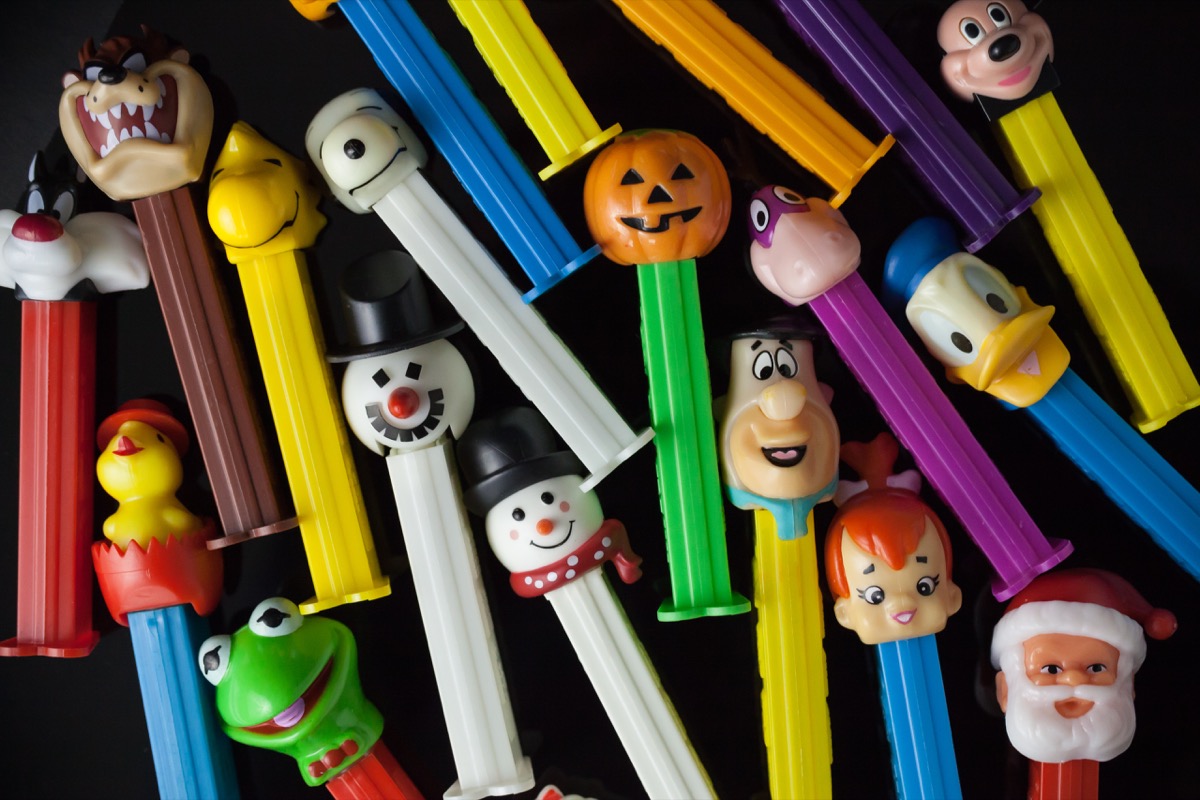
Pez dates all the way back to 1927, when the candy was invented in Austria by Eduard Haus III, who was trying to create an alternative to smoking. Pez dispensers didn't arrive till the '50s, however, and over the next few decades, more and more licensed characters started popping up. And in the '90s, Pez collecting became a legitimate pursuit, with serious collectors hoarding Pez dispensers like they were religious artifacts. The culture at large took notice: Pez even made the cover of Forbes in 1993.
31
Gak (1990s)

If you were a kid in the '90s, there was no substance on Earth you were more obsessed with than the slime on Nickelodeon's game show Double Dare. So when Mattel started selling the gooey green stuff in 1992, you just had to have it. This commercial perfectly exemplified why children craved it so much: Yes, it was a little gross, but it felt weirdly satisfying to squish around in your hands. And more than anything, it repulsed adults. Sold! It's worth noting that Nickelodeon's Gak presaged the slime obsession of the '00s.
32
Sea-Monkeys (1960s)
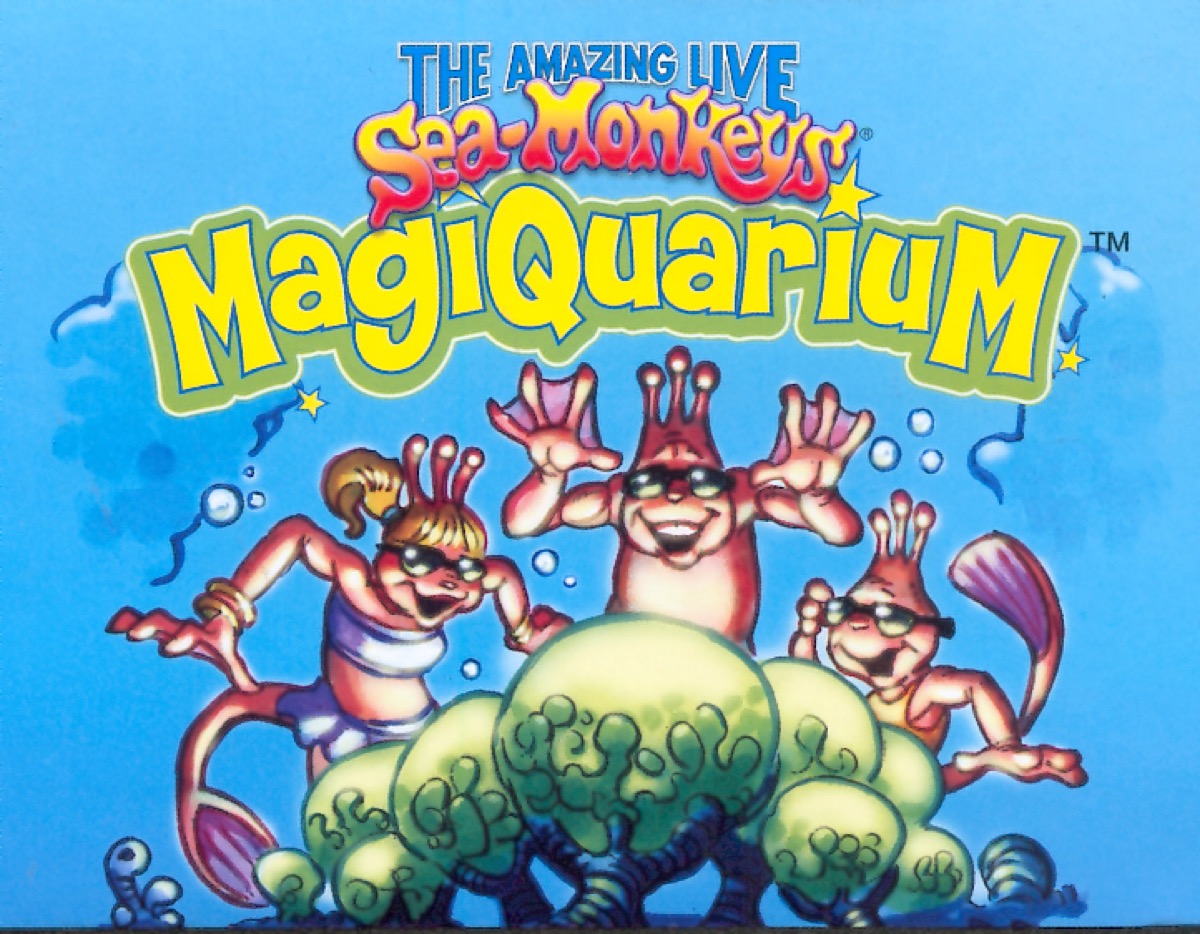
If the ads in the back of comic books were to be believed, Sea-Monkeys were adorable aquatic people with surprisingly human features. "So eager to please," the ads promised, "they can even be trained!"Kids had every expectation that for the low price of $1.25 (plus 50 cents for shipping!), they would soon have a tiny family of anthropomorphic fish-like creatures living in a tank in their bedroom. The disappointment when they discovered that Sea-Monkeys were just brine shrimp—without arms or legs or facial expressions of any kind—was crushing.
33
Pogs (1990s)

Maybe it was the silly name that made kids love this game so much, but Pogs were really just colorful milk bottle caps. Or at least that's how they originated, when Japanese immigrants in Hawaii tried to recreate the popular Japanese game Menko. The game itself was pretty simple: Each player had a stack of Pogs, and then a "slammer" Pog piece was used to slam down on the top of one's opponent's stack in an attempt to topple it. It might sound silly now, but Pogs became coveted collector's items—and sometimes getting the ones you wanted was way more exciting than actually playing the game.



